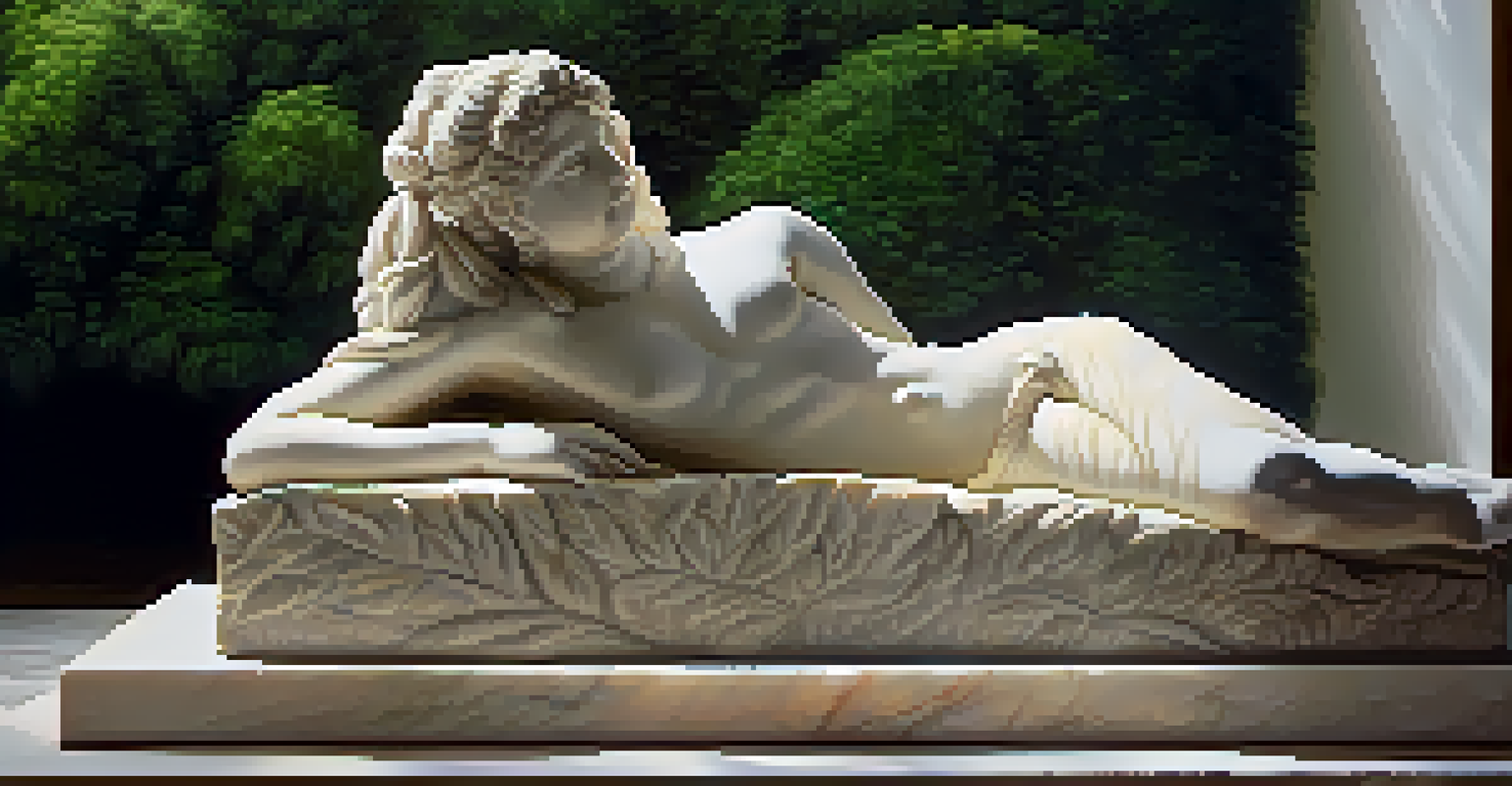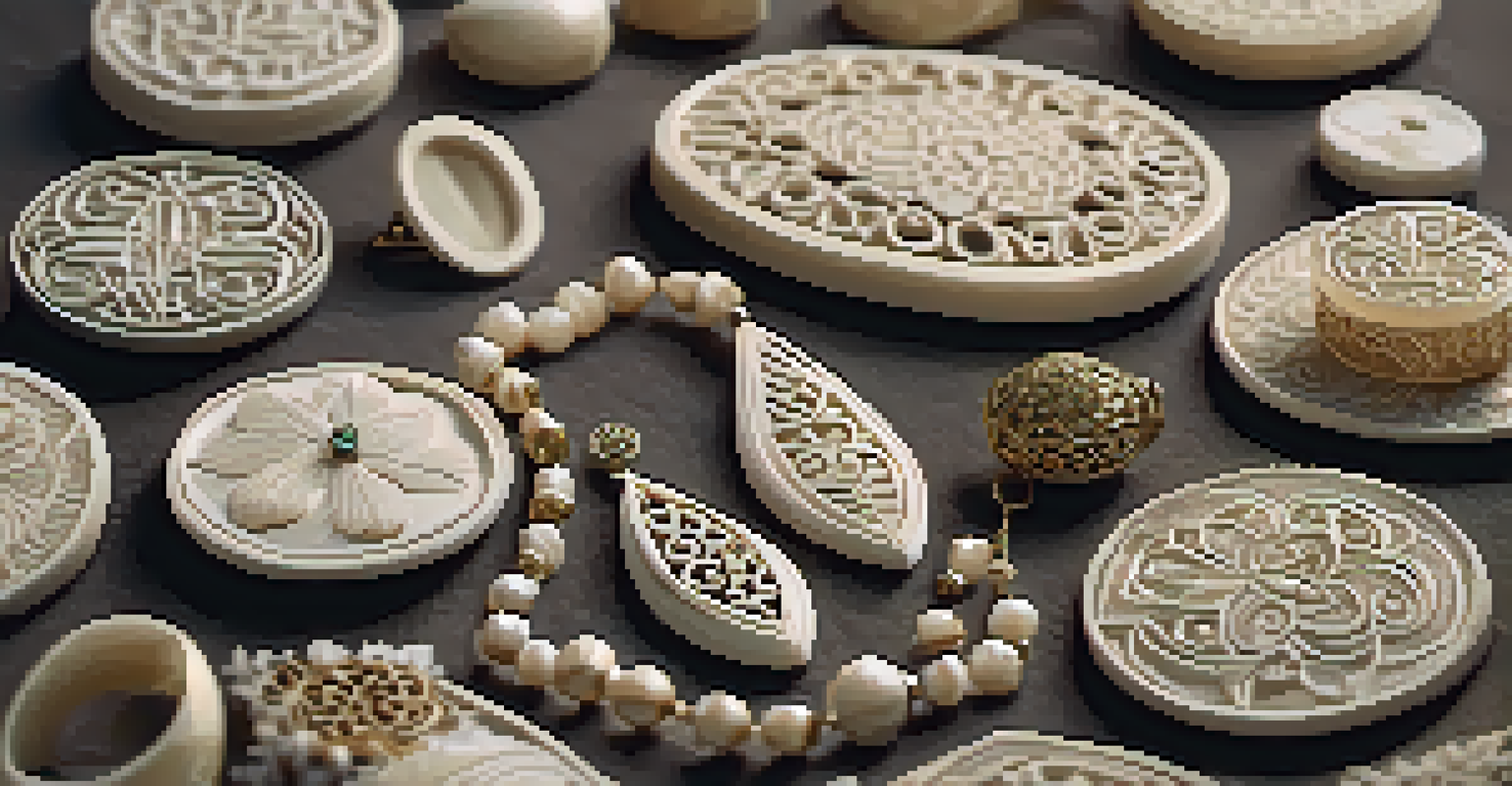Carving Techniques: Preserving History Through Artifacts

Understanding the Importance of Carving in History
Carving has been a vital form of expression for centuries, allowing cultures to document their stories and beliefs. Through intricate designs, artisans create artifacts that not only serve a purpose but also tell a tale. Each carved piece carries the weight of history, reflecting the values and traditions of the time it was made.
Art is the most beautiful of all lies; it is a lie that tells the truth.
Moreover, these artifacts serve as a bridge to the past, offering insights into the daily lives of our ancestors. From tools to decorative items, carved objects provide clues about the materials and techniques used in different eras. They help us appreciate the craftsmanship and ingenuity of those who came before us.
In this way, carving is more than just an artistic endeavor; it's a vital link to human history. By studying these artifacts, we gain a deeper understanding of cultural evolution and the interconnectedness of societies. The stories embedded in carved objects remind us of our shared heritage.
Common Carving Techniques Across Cultures
Various cultures have developed unique carving techniques that highlight their artistic traditions. For instance, wood carving is prevalent in many Indigenous cultures, where artisans transform simple logs into intricate totem poles and masks. This craftsmanship often involves a deep spiritual connection to nature and the stories of their people.

Stone carving, on the other hand, has been utilized since ancient times to create monumental sculptures and architectural elements. Think of the grandeur of the Egyptian pyramids or the detailed reliefs found in Roman temples. These techniques require not only skill but also an understanding of the material's properties to achieve the desired effect.
Carving: A Cultural Time Capsule
Carving serves as a vital link to our shared heritage, allowing us to understand the stories and traditions of past civilizations.
Lastly, bone and ivory carving has also played a significant role in several cultures, often used for creating tools, jewelry, and decorative items. Each technique, whether it involves chiseling, whittling, or engraving, showcases the artistry and cultural significance behind the practice, making each carved piece a unique historical artifact.
The Tools of the Trade: What Carvers Use
Carving requires a variety of tools, each designed for specific techniques and materials. Traditional woodcarvers often rely on chisels, gouges, and knives to achieve the intricate details in their pieces. The choice of tool can dramatically influence the texture and finish of the final product, making it a crucial part of the process.
The past is a foreign country; they do things differently there.
In stone carving, artisans typically use chisels and hammers, as well as more modern tools like pneumatic chisels for larger projects. These tools enable carvers to chip away at the stone, revealing the hidden beauty within. Understanding how to manipulate these tools effectively is essential for any successful carver.
Beyond the physical tools, there's also a knowledge component; carvers must understand the properties of the materials they work with. For instance, knowing how soft or hard a piece of wood is can determine the approach to carving. This expertise not only impacts the artistry but also the preservation of the artifacts they create.
Preserving Carved Artifacts for Future Generations
Preservation of carved artifacts is crucial to maintaining cultural heritage. Environmental factors such as humidity, temperature fluctuations, and light exposure can damage these delicate pieces over time. Museums and collectors often employ specific techniques, such as controlled climate storage, to ensure these artifacts remain intact.
In addition to environmental controls, careful handling and cleaning practices are necessary. Conservators use tools like soft brushes and specialized cleaning solutions to remove dust and dirt without damaging the surface. This meticulous attention to detail helps maintain the integrity of the carvings.
Tech Meets Tradition in Carving
Modern innovations like CNC machines and 3D printing are enhancing traditional carving techniques, expanding creative possibilities.
Furthermore, documentation plays a significant role in preservation. Keeping records of the artifact's origin, previous restorations, and any conservation efforts ensures that future generations understand the object's history and significance. By prioritizing preservation, we honor the craftsmanship and stories embedded in these carved artifacts.
Cultural Significance of Carving Techniques
Carving techniques often carry deep cultural significance, reflecting the identity and values of a community. For example, in many African cultures, wooden sculptures are not just art; they are integral to religious ceremonies and community events. Each carving may symbolize a specific belief or tell a story that is vital to the culture's heritage.
Similarly, in Pacific Island cultures, carving can be a rite of passage. Young artisans often learn traditional methods passed down through generations, fostering a sense of pride and connection to their roots. This practice not only preserves skills but also keeps cultural narratives alive.
Ultimately, these carving techniques serve as a canvas for cultural expression, showcasing the diversity and richness of human experience. They invite us to appreciate and understand different worldviews, encouraging dialogue and connection among various cultures.
Modern Innovations in Carving Techniques
In today's world, traditional carving techniques are being complemented by modern innovations. Technology has introduced tools like CNC (Computer Numerical Control) machines, allowing for precision and efficiency in carving. While this may seem like a departure from traditional methods, it can also enhance the possibilities for artists.
3D printing is another innovative avenue that is reshaping the landscape of carving. Artists can create intricate designs digitally before bringing them to life with physical materials. This blend of technology and artistry opens up new realms of creativity and accessibility.
Preserving Carving for Future Generations
Efforts to preserve carved artifacts are essential for maintaining cultural heritage and ensuring that future generations appreciate these art forms.
However, it's essential to strike a balance between tradition and innovation. While modern techniques can enhance efficiency, they should not overshadow the rich history and skill that comes with traditional carving practices. By integrating both approaches, artists can preserve the art form while exploring new creative horizons.
The Future of Carving and Artifact Preservation
As we look to the future, the importance of carving and artifact preservation remains paramount. With globalization and rapid technological advances, many traditional techniques are at risk of being lost. It's crucial to promote awareness and education around these practices to ensure they continue to thrive.
Organizations and schools that teach carving techniques can play a vital role in preserving these skills. Workshops, apprenticeships, and community programs can engage younger generations, sparking interest and appreciation for this art form. By fostering a sense of community, we can help keep these traditions alive.

Ultimately, the future of carving lies in our hands. By valuing these techniques and the stories they tell, we contribute to a richer cultural tapestry that honors our past while inspiring future generations. The art of carving is not just about creating; it’s about connecting, preserving, and sharing our human experience.